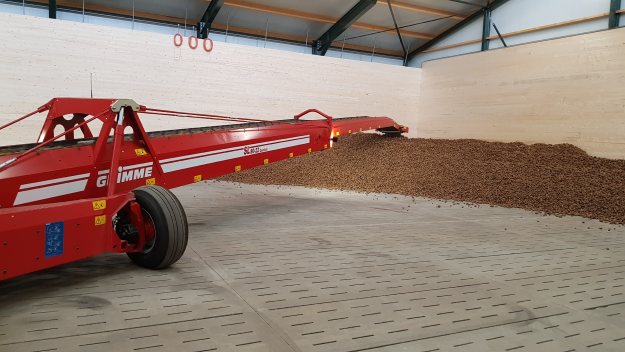The potatoes have received all the attention throughout the season. The result: you harvest the best quality and the highest yield. But what happens in the storage shed for the first few weeks? Do you immediately throw some of the profits overboard or are you going to dry and cool smartly?
The first weeks of storage of potatoes can be roughly divided into 3 different phases:
- Phase 1: level the temperature in the hope.
- Phase 2: drying and wounding.
- Phase 3: cool down very gradually and keep room to keep drying.
The effect on the efficiency of storage is very large in these 3 phases. Making mistakes means that there are losses that can no longer be made up. These unnecessary storage losses can amount to several percent weight loss. And every 2% on a batch of 2,000 tons of stored product is more than a truck full of potatoes.
Useful storage tips
Each stage therefore requires specific attention. Tolsma-Grisnich’s storage specialists have useful tips for this. Do you want to take advantage of this and thereby keep the cost of your potatoes lower? Check out the advice videos. And do you have any questions after that? Please feel free to contact them.

Temperature differences and internal ventilation
After harvest, a batch of potatoes with varying temperatures goes into storage. These differences must be eliminated quickly. You can do this by venting properly internally first. So don’t start cooling! Place the temperature sensors well distributed over the batch. Preferably also (for example via the pressure chamber) at the bottom of the cell to measure the temperature at the bottom of the batch.
Set the storage computer at the same temperature
Is the temperature uniform, but the batch is not yet dry? Then opt for outdoor drying. Place the storage computer on the ‘drying or wounding phase’ position so that only drying air is ventilated. Give the batch time and don’t dry too fast. Also, avoid cooling down too quickly. If a batch is at a low temperature too quickly, this limits the possibility of drying with outdoor air at a later date, on hot days and nights. A good wound healing is 30% faster at 15°C than at 12°C (20 days instead of 30 days).

Drying damp batches with stove
Damp batches or batches that come in with a lot of soil require extra attention when drying. Therefore, turn on the fans continuously to distribute the moisture well over the batch. With the shutters on automatically you use every opportunity to ventilate with outdoor air. Also, there is always air movement in and above the product. The climate computer ensures that, based on temperature and relative humidity, it is only externally ventilated when the outside air is drying. With a stove, the product stays at temperature.
After the period of drying, the wound healing of the batch follows. In case of wound healing: keep the potatoes at temperature and rotate minimally with external air and periodically with internal air. This causes the wounds on the potatoes to heal, resulting from (harvest) damage during, for example, harvesting or athey. The period of wound healing depends heavily on the product temperature.


